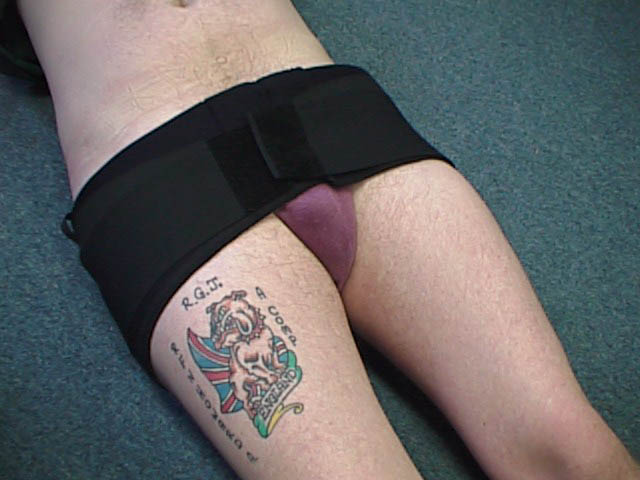
The CARE Course
Critical Procedure - Pelvic binder application
Completion requirements
Back to Critical Procedures - Index page
Home
For all procedures, ask yourself, 'does this need to be done 'now vs later'? And should this be done by 'me vs someone else?' Very often the answers will be 'now' and 'me' - so read on!
Pelvic binder application
Description
How to apply a pelvic binder for suspected fractured pelvis.Indications
- Suspicious mechanism of injury + patient unable to report symptoms clearly
- Suspicious mechanism of injury + alert + pain in region +/- signs of shock
Contraindications
Relative:
- open wound of pelvis that the binder might prevent from being packed/managed.
Equipment
Commercial pelvic binder such as the SAM Sling, T-Pod etc - if you have one of these, follow the instructions.Improvised - bed sheet (or similar), KED or vacuum mattress.
Procedure
 Commercial pelvic binder - follow the manufacturers instructions.
Commercial pelvic binder - follow the manufacturers instructions.Improvised. Tie a bed sheet (or similar) centred around the greater trochanters (not the iliac crests). Apply firm, but not over-tight, force. You are aiming for consistent, firm inward pressure but not to overly compress the pelvis.
(James Heilman, MD, CC BY-SA 4.0 <https://creativecommons.org/licenses/by-sa/4.0>, via Wikimedia Commons)
Alternatives include using a KED (Kendrick Extraction Device) or a vacuum mattress, firmly secured
Potential pitfalls
Not applying the binder early - haemostasis is paramount.Binder applied too tightly or not tight enough.
The creation of pressure areas that could cause necrosis.
Insecure fastening of the binder.
Delaying the application of a pelvic binder in favour of awaiting external fixator application.
Regarding the pelvis as fully stable once the binder is applied - this is incorrect and log rolls or other moves that stress the pelvis, should be avoided if possible.
"Plan B"
Be prepared to re-fix the pelvic binder if it becomes loose.
Think about accessing blood transfusion capability.
Think about accessing blood transfusion capability.
Back to Critical Procedures - Index page
Home
Last modified: Thursday, 19 May 2022, 3:22 PM
